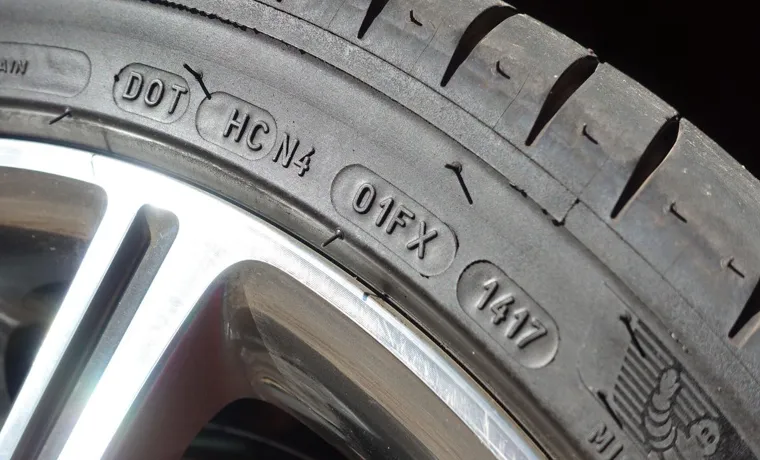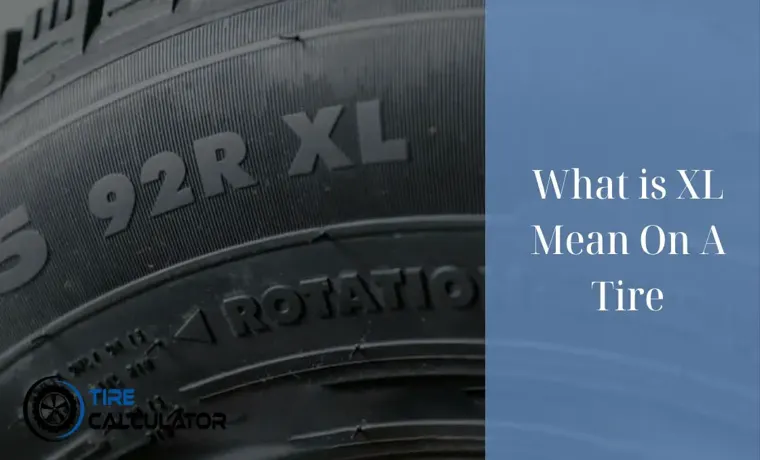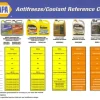Have you ever seen an “XL” marking on a tire and wondered what it meant? You’re not alone. The abbreviation “XL” is short for Extra Load, and it’s an essential designation for drivers of heavier vehicles. When you see the letters XL on a tire, it means that the tire can handle more weight compared to standard tires without compromising performance and safety.
Driving a heavier vehicle presents unique challenges, such as a higher risk of tire blowouts due to overloading. Regular tires can’t handle the added weight, leading to premature wear and tear, and unsafe driving conditions. That’s where XL tires come in handy.
They’re engineered to withstand the added stress, capable of carrying heavier loads while maintaining excellent traction and stability. So, if you’re driving a larger vehicle, like an SUV or a pickup truck, you need to make sure your tires are marked with XL. It’s crucial to check the tire manual or consult with a mechanic to ensure you’re using the right tires for your vehicle.
Using regular tires on a heavy-duty vehicle could compromise your safety and the safety of other motorists on the road. In summary, the XL marking on tires signifies an extra load carrying capacity for heavier vehicles. It’s a crucial aspect that drivers need to be aware of to ensure safe and comfortable driving conditions.
So, the next time you see those two letters, you’ll know precisely what they mean and why they’re crucial for your vehicle’s safety.
Table of Contents
Understanding Tire Markings
If you’ve ever looked closely at the markings on your tires, you may have come across the letters “XL” or “Extra Load”. These markings indicate that the tire has a higher load capacity than standard tires, making them a popular choice for larger vehicles such as trucks or SUVs. Essentially, XL tires are designed to handle more weight without compromising safety or performance.
While the exact load capacity of XL tires varies depending on the specific make and model, they generally have a higher load rating than non-XL tires of the same size. So if you’re in need of a tire that can handle heavy loads, look for the XL marking when shopping for new tires.
Size
When it comes to understanding tire markings, size is one of the most important factors to consider. The size of your tire is indicated by a series of numbers and letters on its side. For example, if your tire reads “235/55R18,” the first number (235) represents the width of the tire in millimeters.
The second number (55) is the aspect ratio, which means the height of the sidewall as a percentage of the tire’s width. The letter “R” indicates the tire’s construction (radial) and the final number (18) represents the diameter of the wheel in inches. Understanding these markings can be helpful when selecting the right tire for your vehicle.
It ensures that you choose a tire that fits properly, provides the right amount of traction, and is compatible with your vehicle’s specifications. So, the next time you need to purchase tires, take a closer look at the markings to ensure that you are making an informed decision.

Load Index
When it comes to understanding tire markings, one of the most important things you need to understand is the load index. This marking indicates the maximum weight that a tire can safely carry, and it’s represented by a number on the sidewall of the tire. The higher the number, the more weight the tire can carry.
For example, a tire with a load index of 95 can safely carry up to 1,521 lbs, while a tire with a load index of 75 can only carry up to 852 lbs. It’s important to choose the right load index for your vehicle to ensure that your tires can safely support the weight of your car, passengers, and cargo. Failing to do so can lead to tire blowouts, loss of control, and other dangerous situations on the road.
So, the next time you’re shopping for new tires, be sure to pay attention to the load index to ensure that you’re getting tires that are appropriate for your vehicle’s weight and size.
Speed Rating
When it comes to buying tires, it’s important to understand the markings on the sidewall. One of the most critical markings is the speed rating, which indicates the maximum speed that a tire can safely handle. The speed rating consists of a letter that corresponds to a specific speed range.
For example, a tire with an H rating can handle speeds up to 130 mph, while a W-rated tire can handle up to 168 mph. It’s crucial to choose the appropriate speed rating for your vehicle and driving habits to ensure safety on the road. Choosing a tire with a lower speed rating than required could result in a tire failure at high speeds, whereas selecting a tire with a higher speed rating than required may not provide any benefits and may even negatively impact ride quality and fuel economy.
Therefore, always look for the speed rating when buying tires and choose one that matches your needs.
Decoding XL on a Tire
If you’ve ever noticed the letters “XL” on a tire, you might have wondered what they mean. These letters actually indicate that the tire is an Extra Load tire, which means it’s designed to carry more weight than a standard tire. This is important for vehicles that carry heavy loads, like trucks or SUVs.
The XL designation typically means that the tire can support up to 10% more weight than a standard tire of the same size and speed rating. It’s important to note that not all tires have an XL option, and that using a tire that isn’t designed for the weight of your vehicle could lead to safety issues. So if you’re in the market for new tires, be sure to check the load rating as well as the size and speed rating to ensure you’re getting the right tires for your vehicle.
Extra Load
When it comes to understanding tire ratings, the XL rating can be a bit confusing. XL stands for Extra Load, which means the tire is capable of carrying more weight than a standard tire of the same size. This rating is often found on SUVs, pickup trucks, and other vehicles that are used for hauling heavy loads.
It’s important to note that XL doesn’t mean the tire is stronger or more durable, just that it can handle additional weight. It’s crucial to pay attention to the maximum load capacity rating for the specific tire, as exceeding it can result in blowouts or other dangerous situations. When shopping for new tires, consider the XL rating if you need extra load capacity, but don’t forget to also consider other factors such as tread life, handling, and overall quality.
Benefits of XL Tires
XL tires are becoming more common on today’s vehicles, but what exactly does the “XL” mean? The term “XL” on a tire stands for “extra load,” which means the tire has a higher load-carrying capacity than a standard tire. This is due to the tire’s reinforced construction and sidewall construction, which helps it maintain its shape and provide stability under heavy loads. As a result, XL tires are an excellent choice for larger and heavier vehicles such as SUVs, pickups, and vans.
Installing XL tires on your vehicle provides numerous benefits, including improved handling, better stability, and increased towing capacity. Additionally, XL tires have a longer lifespan due to their durability and are less prone to damage, offering better value for your money in the long run. So, if you have a larger vehicle and frequently carry heavy loads or tow trailers, upgrading to XL tires can offer many advantages and improve your driving experience.
Proper Use of XL Tires
When you come across the term “XL” on a tire, it indicates that it is an extra load tire. This means that XL tires are designed to carry more weight than standard tires. XL tires are typically used for larger vehicles that require higher load carrying capacity, such as SUVs, trucks, or vans.
It is crucial to understand the proper use of XL tires, as using them on a vehicle that does not require them can lead to issues. For example, using XL tires on a compact car can result in a harsher ride and worse fuel efficiency. On the other hand, not using XL tires on a vehicle that requires them can lead to tire failure and even accidents.
It is always recommended to match the tire type with the vehicle’s specifications and requirements to ensure optimal performance and safety.
Conclusion
In conclusion, the mysterious XL on a tire does not stand for “extra large” or “extremely loud.” Rather, it denotes a tire’s ability to handle extra load capacity. So next time you see XL on a tire, you can confidently say, “That tire can handle some serious junk in the trunk.
“
FAQs
What does the XL on a tire stand for?
XL stands for Extra Load. This means that the tire can carry a heavier weight than a standard tire with the same load index.
Is XL the same as reinforced or extra reinforced on a tire?
No, XL is not the same as reinforced or extra reinforced. Reinforced tires have stronger sidewalls to support the weight of a vehicle while XL tires are designed to handle heavier loads.
How do I know if I need XL tires?
You should choose XL tires if your vehicle carries heavier loads than what is recommended for standard tires. Check your vehicle manual or consult an expert to determine the appropriate tire size and load capacity.
Can I replace my standard tires with XL tires?
Yes, you can replace your standard tires with XL tires if they have the same size and load capacity index. However, XL tires may have a stiffer ride and higher cost than standard tires.
Are XL tires suitable for all types of vehicles?
XL tires are recommended for heavy-duty vehicles such as trucks, SUVs, and vans that carry heavy loads. They may not be suitable for small cars or vehicles that don’t require extra load capacity.
Do XL tires affect fuel economy?
Yes, XL tires may slightly reduce fuel economy due to their heavier weight and stiffer construction. However, the difference in fuel consumption is often negligible.
How long do XL tires last?
XL tires can last as long as standard tires if they are properly maintained and used according to the manufacturer’s guidelines. It’s important to regularly check for signs of wear, rotate the tires, and keep them properly inflated.



